Text
Critical & Cultural Studies Summary.
In critical cultural studies classes, I learned a lot about the world of design. As I intend to do illustration, I didn't have much interest in this area in particular. However, as classes were being taught, I became increasingly interested in the topics of the classes. About several of the artistic movements that occurred in history, besides making me interested in researching more and more about a certain subject. The "Protest!" for example. I had chosen questions about the black artistic movements in the 60s. I had little idea of what these movements were, and from the moment I started to look at books and articles on the subject, today I can say that my repertoire has improved a lot.
I find it interesting because many of these ideas are extremely relevant today. When we talk about the designs of Saul Bass, for example, who served as inspiration for several designers who came later, who say that his minimalist style is something unique, and that many used it as a basis for the construction of their posters.
In addition to the black arts movement itself, it was extremely important for the African Americans, to have been able to express themselves through art, also through music and protests about the difficulties and problems they went through in life, because of their color.
With the arrival of the 21st century, much of what was done in the past involving art was used as it influenced the new generation.
Graphite, for example, is something that interests me a lot, and I would like to learn about its origins, and how its influence spread around the world, and talk about graffiti artists like Banksy himself.
And also the great influence that exists in Brazil and in its great metropolis like São Paulo.
1 note
·
View note
Text
CCS: International Style
- How did designers like Paul Rand and Saul Bass contribute to post war American prosperity ?
Answer: Paul Rand and Saul Bass are two of the most famous designers and some of their works are known all around the world. Saul Bass, was known for designing movie posters and title sequences for 40th years, he worked with Hollywood greatest filmakers, such as Stanley Kubrick, Alfred Hitchcock, Martin Scorsese and Billy Wilder.
Paul Rand was best known for his corporate logo design, including the logos for IBM, UPS, Enron, Morningstar, ABC, and Next. Unlike Rand, Bass was best known for the corporate logo designs.
While designers in Europe were forging the international typographic style into a cohesive movement, American designers were synthesizing concepts from modern art into highly individualistic and expressive visual statements.
From the 1940s through the 1960s, New York city was a major centre for innovation in design as well as the fine arts.
During the 1940s, Paul Rand emerged as an American designer with a personal and innovative approach to modern design. Rand understood the vitality and symbolic power of colour and shape in the work of artists such as Paul Klee, Wassily Kandinsky and Pablo Picasso.
Rand created a design from elemental geometric forms and colours that can be read as both an abstracted figure or a normal figure, to reach potentional audience for stores, and other goods and services by advertising in the subway.
For 40th years, Saul Bass has worked with several directors and created several posters. Bass stepped up the sophistication of movie posters with his distinctive minimal style and he completely revolutionized the role of title credits in films.
Traditionally, credits were static and drab. They were considered so unimportant, they would actually be projected onto the closed curtains which would only open for the first official scene of the movie.
He became widely known for creating the title sequence for Otto Preminger’s The Man with the Golden Arm (1955), which’s about a jazz musician, addicted to heroin. Bass decided to create a poster which dialogues, with the controversial subject, so he chosed the arm as the central object, as is a image which related with heroin.
Bass and Rand used their innovative ideas and unique perspective of the world to influence their art, engaging their audience and developing the graphic design industry in the process.




- Paul Rand designd most of the American brands logos.




- Stanley Kubrick didn’t liked the sketches. He wrote “ Looks like a science fiction movie”.




- Bass worked with known directors, like Alfred Hitchcock, Mike Nichols, Robert Wise, Stanely Kubrick and Martin Scorsese.

- Hitchcock’s famous shower muder scene in Psycho, owes it’s sucess to the design work of Bass’ storyboards.
- Could they do the same today ?
Answer: Bass’s lasting influence on the clean icons and minimalist visual designs permeating tech culture today.The notion that something as a pedestrian as a brand could induce contemplation was a novel idea when Bass began working on logos in the 1970s. Employing deceptively plain shapes and lines, he created iconic logos for some of the world’s most well known companies.His illustrations became seminal examples of how to express an idea, or emotion, in visual form, and much of his later work followed this same principle.Bass once said that the audience’s involvement in the film should begin at the very first frame.
He believed title sequence were responsible for setting the mental and emotional tone for the story that was about to be told.His logos for Dixie, Quaker, AT&T and others have been “updated” entirely. Most attempt to refresh or modernize these logos result in 3D imitations that somehow feel more dated than Bass’s originals.The redesigns can’t take away from Bass oeuvre. He created identities for some major corporations in his time. Paul Rand not only influenced his peers, but also the shape of graphic design today, when Rand started working in advertising firm in 1930s, creativity was a rare commodity.Rand brought in a radically different approach, recognizing that the power of the ad was largely affected by the way images and words were combined.This fresh departure revolutionized the industry. Today ads are rarely cluttered by cumbersome text, but instead are visually stimulating and designed to draw the reader’s eye. Rand was the one who brought art into advertising.






- Many logos have been updated by other designers, such as these Saul Bass logos.
References:


- I read both of these books, and I learned some aspects about the design.
Links: http://www.designverso.it/images/2016-17/bass_01.pdf
https://www.famousgraphicdesigners.org/paul-rand
1 note
·
View note
Text
CCS: Protest !
- Describe the growth and development of black visual culture in the sixties and seventies ?
Answer: The beginning of the black arts movement solidified around the arts-activism of Amir Baraka in the mid 1960s. A poet, playwright and publisher, Baraka was a founder of the black arts repertory theatre/school in Harlem and spirit house in Newark, New Jersey, his hometown.
Baraka’s initiatives on the east coast were paralleled by black organizations in Atlanta, Chicago, Detroit, Los Angeles, New Orleans and San Francisco leading to a national movement.
In its philosophy, “Black is Beautiful” focused on the emotinoal and psychological well-being.
By highlighting changes and continuties in African American cultural politics over the course of four decades, it offers fresh perspectives on the contours of the long civil rights movement.
Emory Douglas was one of the most important artists and designers of the black visual cultural movements of the sixties. He worked as the minister of culture for Black Panther party from 1967 until the party disbanded in the 1980s. His graphic art was featured in most issues of the Black Panther newspaper. As the art director, designer, and main illustrator for the Balck Panther, Douglas created images that became icons, representing black american struggles during the 1960′s and 1970′s he realized the Black Panther needed potent images to cut through the high illiteracy rates in poor communities.
Douglas’s artwork were spread on neighborhood walls. Each made the revolution appear imminent and encouraged pride and self defense in communities otherwise broken by brutal police. His signature bold lines formed the faces of an armed and defiant people who refused oppression.
“The Black Aesthetic” (1971) by Scholar Addison Gayle, are essays that call for black artists to create and evaluate their works based on criteria relevant to black life and culture. Their aesthetics, or the values of beauty associated with the works of art, should be a reflection of their African heritage and worldview, not European dogma, the contributors stated. A Black Aesthetic would embolden black people to honor their own beauty nad power.
In 1971 was organized the “Where We At” Black Women Artists (WWA) provided an opportunity for black women, marginalized by both the predominantly male black arts movement and the largely white feminist ( and feminist art) organization, to share concerns and resources. Although they made art, many of WWA’s members did not consider themselves professional artists.
This movement provided these women with a space in which they could engage in meaningful substantive conversation and exchange work and ideas.
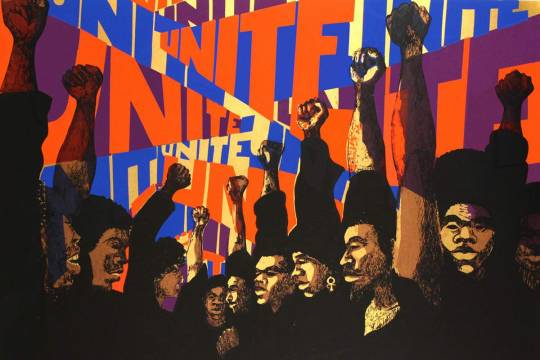


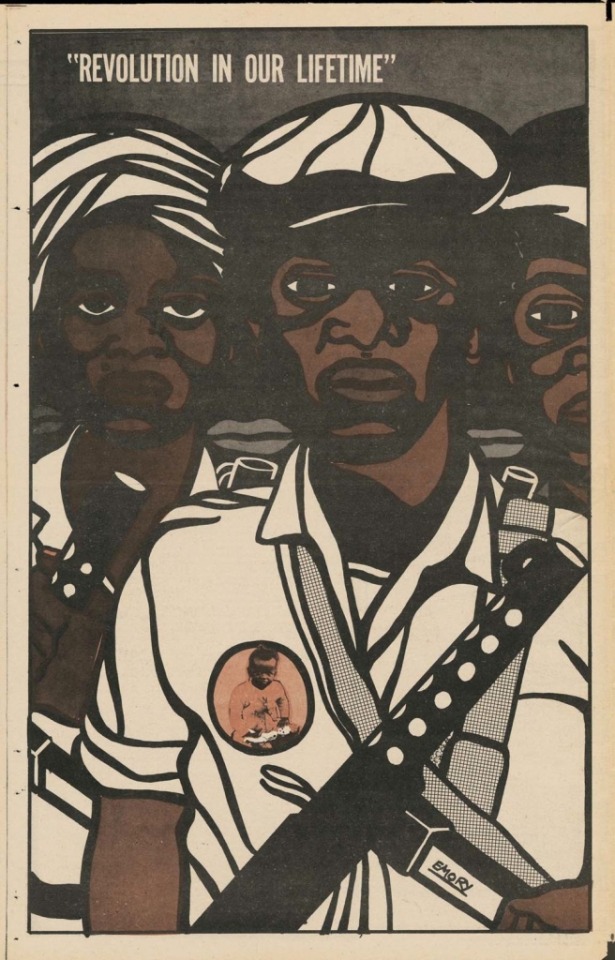


- Emory Douglas, one of the most famous artists from The Black Arts movement, who worked as the designer of The Black Panthers propaganda for many years.

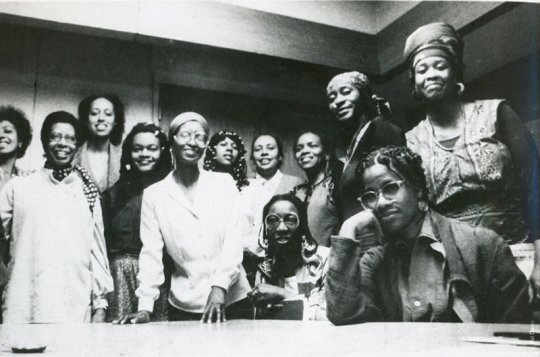
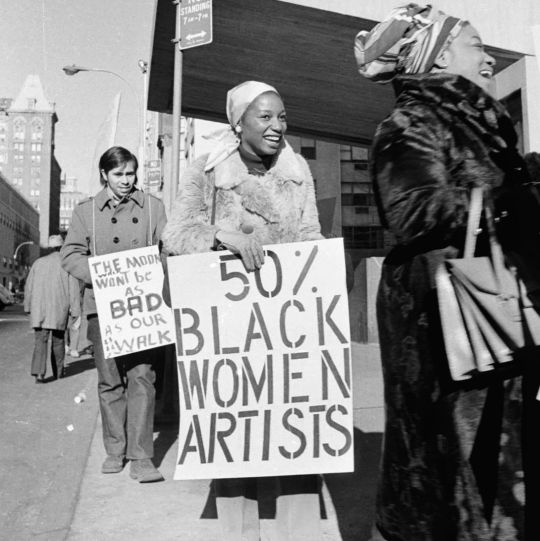
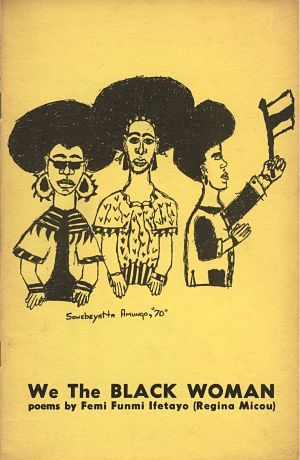
- “Where We At” Black Women Artists, inc (WWA)
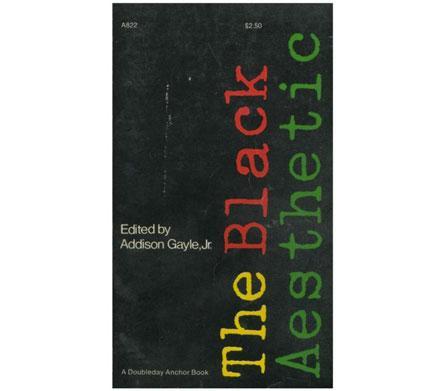
- The Black Aesthetic book, ranges from music to literary criticism.It’s a interesting book about the black arts movement.
- Does this work have contemporary significance ?
Answer: The movement has been seen as one of the most important times in African-American culture. It inspired black people to establish their own publishing houses, Magazines, Journals and art institutions.
It led to the creation of African-American studies programs within universities.
The movement lasted for about a decade, through the mid- 1960s and into the 1970s. This was a period of controversy and change in the world of the African-American society. One major change came through in the potrayal of new ethnic voices in the United States.
African Americans became a greater presence not only in the field of literature but in all areas of arts. Theater groups, poetry, performances, music and dance were central to the movement. African Americans were able to educate others about the expression of cultural differences and viewpoints.
The Black Arts movement, is essential to the history of the United States. It spurred political activism and use of speech through out every African American community. It allowed African Americans the chance to express their voices in the mass media as well as become involved in communities.
The African American people openly took pride in being black and worked to improve, to define, a clear perception of themselves. It was necessary to fulfill the self determination that the Black Power concept aimed to achieve in order to build a reality of its own.
Although the movement does not exist as such today- The members took separete ways, as their political views started diverging in 1974- is able to recognize its legacy, in today’s rhythm and blues, gospel, hip hop and rap music.

- Charlie “Bird” Parker, one of the greatest saxophonists and jazz players in history.
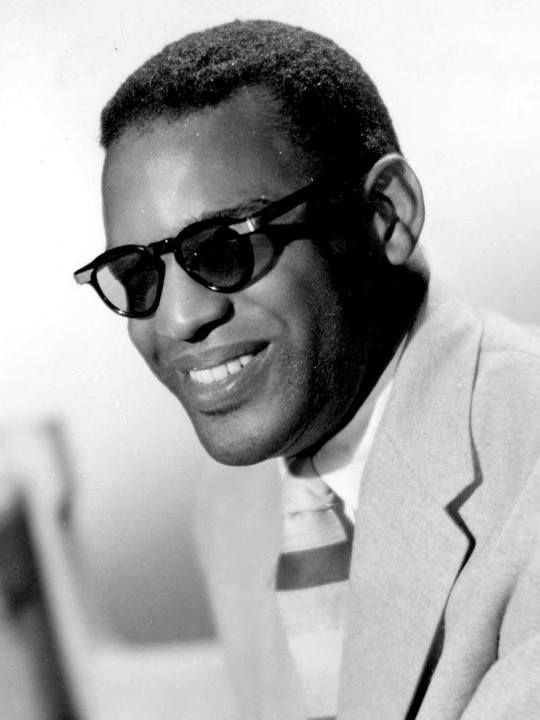
- Ray Charles the pioneer of jazz.
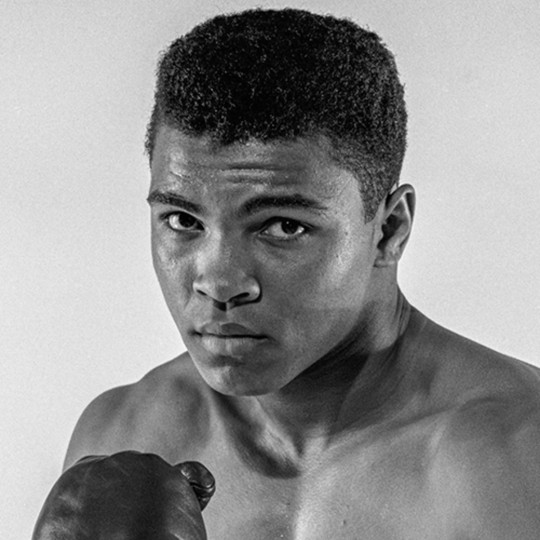
- Muhammad Ali, probably the best known sportsman of all time.

- James Brown the king of soul
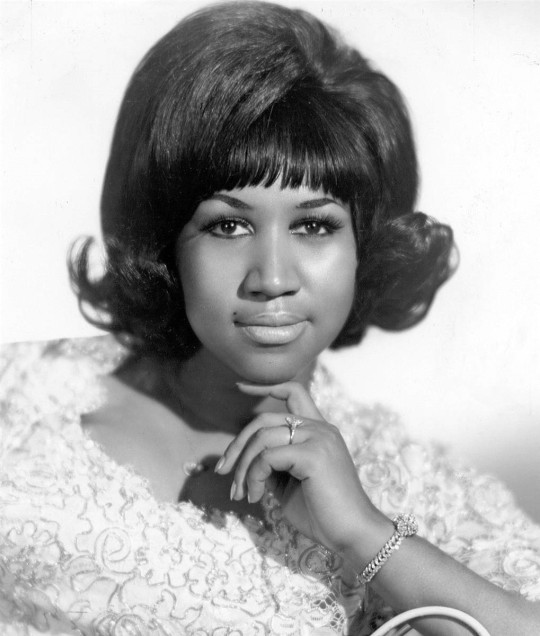
- Aretha Franklin the queen of soul
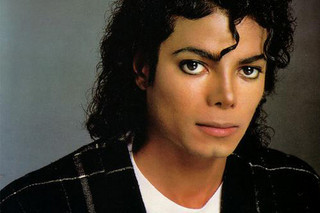
- Michael Jackson, the king of pop.
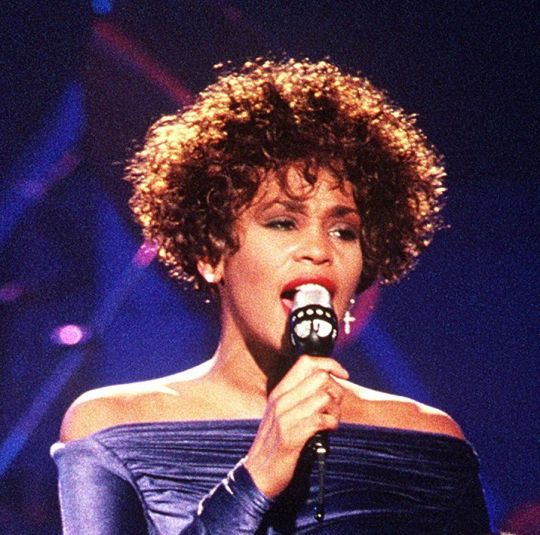
- Whitney Houston the queen of pop
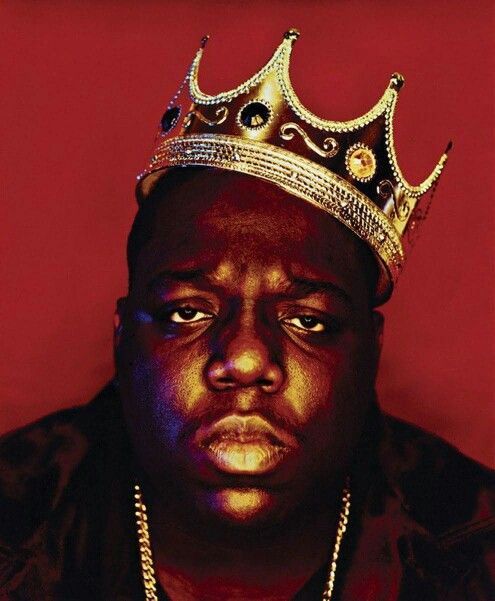
- Christopher Wallace The Notorious Big
References:
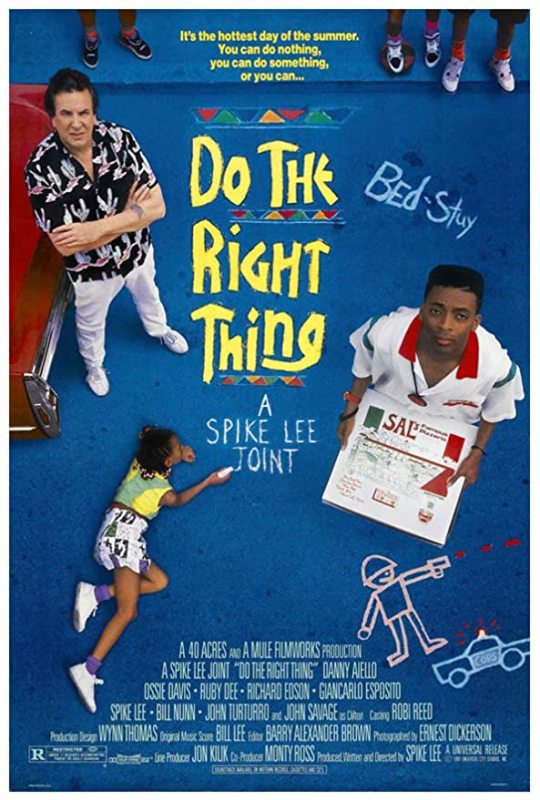
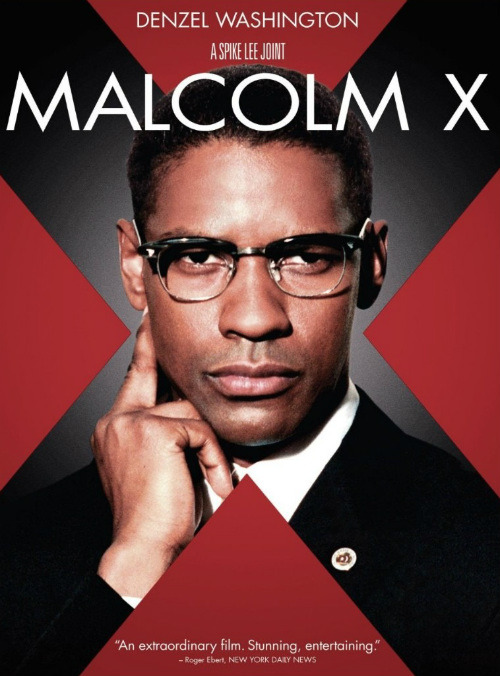
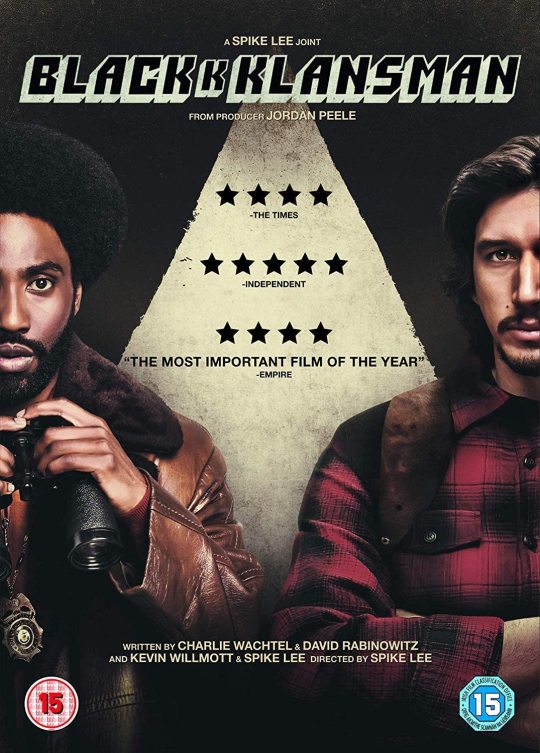
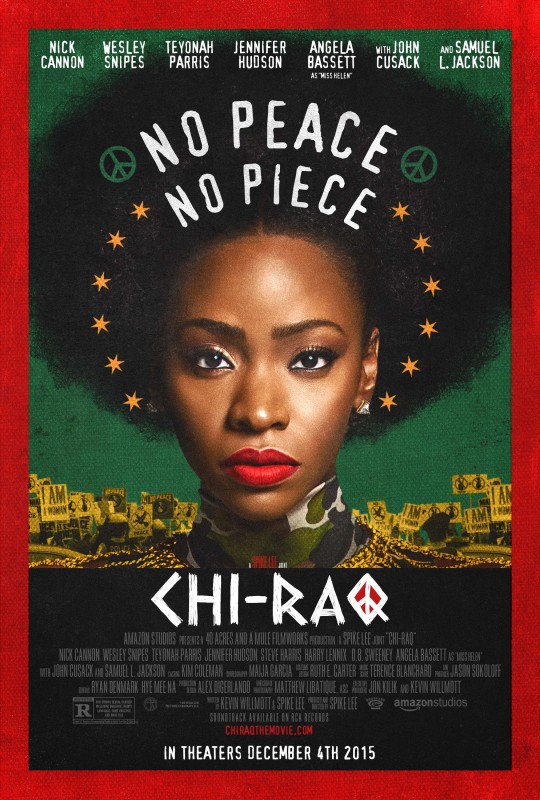
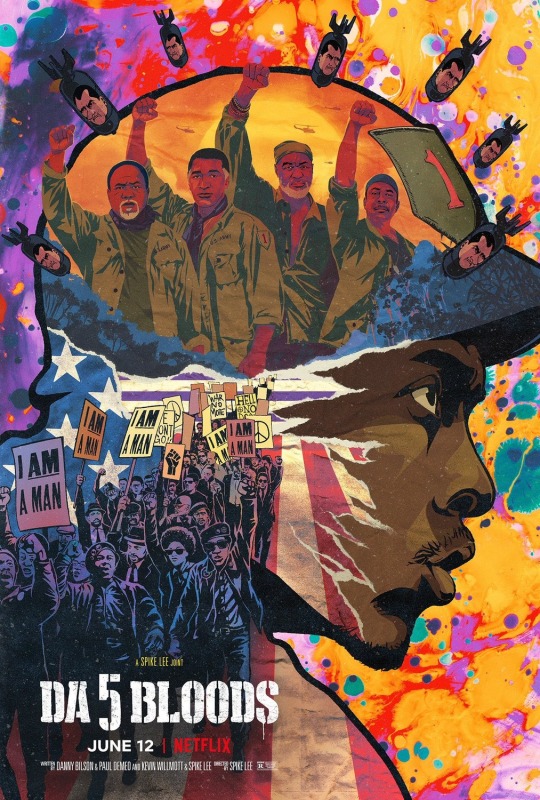
- Spike Lee is one of the most influential directors today. Your films are centered to explore race relations, colorism in the black community, the role of media in contemporary life, urban crime and poverty, and other political issues.
Online links: https://jovemnerd.com.br/nerdcast/martin-luther-king-e-a-luta-contra-o-racismo/
https://www.blackpast.org/african-american-history/black-arts-movement-1965-1975/
https://www.thoughtco.com/women-of-the-black-arts-movement-45167
0 notes
Text
CCS: Brazilian Style
how did the musicians, filmmakers and artists deal with Brazilian sexuality and popular culture during the 60’s ?
The main characteristic of the counterculture movement was its profound criticism of the capitalism system and the patterns of unrestrained consumption. The young people who integrated this movement of contestation to the moral and aesthetic values of the global society promoted revolutions in their ways of dressing. Their clothes and hairstyles became symbols of this parallel universe that they designed to break the capitalist fads of the elites.
The musical movement in Brazil greatly innovated Brazilian popular music, bringing in its lyrics irreverent verses that broke with the type of music made until then.
Tropicalismo or Tropicalista movement was a cultural movement that emerged under the influence of the artistic trends of the avant-Garde and of national and foreign pop culture ( such as rock n roll and concretism), mixing traditional manifestations of Brazilian culture with radical aesthetic innovations. It had behavioral goals, and to challenge the dictatorship, in the late 1960s.
Mix of national culture traditions and international aesthetic innovations, such as pop art.
Songs that talked about sex, about the woman’s body, clothing, but also morals and behavior.
The greatest representatives of this musical movement was, Gal Costa, Gilberto Gil, Os mutantes and Caetano Veloso.
Until the 60s, 90% of the songs that reachedthe album were about sex, bitter, vindictive and even tragic loves, pains and sufferings, in addition doses of moralism and chauvinism. When the woman is not the cause of all ills, a traitor or a fallen person, she is an idealized, ethereal and virginal figure.
National cinema has always had within is characteristics the erotic and sensual side of the people. One of the most important films of this time was “O Bandido da Luz Vermelha”. The story of criminal who gained enormous repercussion in Brazil in the 1960s, João Pereira da Costa, O Bandido da Luz Vermelha.
O Bandido da Luz Vermelha promoted intense public disturbance of law and order, with dozens of assaults, accusations of rapes and homicides, would come to be considered the number one public enemy of the São Paulo capital and, after an unceasing police investigation, he was arrested on August 7, 1967.
The criminal, who spent a large part of the stolen money, with women and nightclubs, the film shows a lot, the woman as a kind of sexual object, for the bandit.
The movie have very controversial characteristics, but at the same time understanding the qualities that make us up, and with excellent camera work in hand and editing, he made a film which criticizes the Brazilian society at the time, and that still remains current.
As the military dictatorship was in power, the director Rogério Sganzerla’s features gains even more strength. The film clearly seeks to show Brazil as a corrupt place, with powerful people, and an entire social structure that punishes the poor, and frees the ignorant and arrogant criminals from the powerful classes.
He mixed the influences of Jean Luc Godard, Orson Welles, and Glauber Rocha to say how cinema in Brazil should be done from them on.
One of the most significant movements within this theme was “pornochanchada”. This represented a significant moment in national cinema. With erotic themes, getting very close to sex, these films were full of sensuality and the comic side always present.
Economically, this cinematographic movement had great repercussion, since it must be considered as popular, due to its success with the population in general.
They had their peak in the 60’s and 70’s.
According to its supporters, these films contributed to ‘de-eliteize’ Brazilian cinema, taking every kind of classes, to the screening rooms.
Erotism is one of the strongest spheres of representation in Brazil. Since it manifested itself in the main stereotypes that the country has and that what people think are imagined by others, including foreigners. Our representatives, like football, samba, our natural beauty, are distinguished precisely by this touch of erotism.
Brazilian cinema was divided into two aspects, starting in the 1960s: family cinema, class situations and political life; and the other, centered on passions and sexuality.
In the past, however, the fame of sensuality of Brazilian women came to be used in official campaigns to attract foreigners to the country.
Terms like “feelings of protest”, “revolutionary pieces”, “rebelliousness”, “national identity” and “true Brazilian culture” open the way for more artistic manifestations. With regard to the process related to the idea of social participation of art: as is the case of opening art to the public, the collective aspects of production involved in it, as well as the tensions between engagement and experimentalism, in which a noticeable change in the use of images linked to the categories of “people” and “popular” can be perceived.
The central point involved is the predominant way in which the images of the urban and the suburban appear in the experimental projects of a group of artists linked to the neo-avant- Garde trends of the 60s- and no longer the image of the people as peasants or rural areas. The latter, incidentally, was prefigured to a large extent in intellectual and artistic debates about the national and the popular since previous decades and in various forms of art. The main idea was that the people’s culture, in its most authentic and genuine expression, was limited to its more traditional rural origins; manifested, above all, in the figure of the peasant, the simple man or the worker of the field.





- During the 60s and 70s, Brazilian films had sex as their main theme. O Bandido da Luz Vermelha for example, shows the character as a womanizer, and women being treated as a sexual object.
- Pornochanchadas appeared in the late 60s and gained great notoriety in the 70s, and lost strength in the 80s, due to the rise of the porn cinema. Unfortunately, this was one of the factors that made sex tourism in Brazil encouraged. Embratour for example encouraged this type of thing, with extremely sexist posters made in the 60s and 70s.


- Tropicalismo mixed several styles of music from rock to Baiao. It transformed tastes of the time, not only in relation to music and politics, but also behavior, morals, sex and the way of dressing .
Was there a positive dimension on the production of Brazilian art, music, cinema by the 60s ?
Film production in Brazil in the 1960s was marked by a series of readings and reinterpretations about the national reality in its various facets- in politics and plastic arts, in cities, in the countryside, in the world of work and institutions- that sought to negotiate already consecrated images of the country with new political and aesthetic projects. From the films and themes discussed in the course, discuss the legacy of this period from the continuities and discontinuities of its issues in current documentary cinema and interpretations of contemporary Brazil.
Glauber Rocha was one of the most important filmmakers of this period, because most of his movies contained themes such as anthropology, sociology, history and semiology.
Brazilian popular music, such as Bossa Nova, became extremely popular, and beloved both in Brazil and in foreign countries, like the the United States.
From the 60s onwards, the samba of bossa nova was definitely consolidated in the Brazilian music, where João Gilberto and the duo Tom and Vinicius stood out, such as Newton Mendonça, Billy Blanco, Aloysio de Oliveira, Banden Powell, Oscar Castro Neves, etc.
It was at that moment that the style experienced an international projection on a scale never seen before with another aspect of Brazilian popular music. In 1962 saxophonist Stan Getz together with the guitarist Charlie Byrd released the LP “Jazz Samba”, and also Frank Sinatra and Tom Jobim 1967 album ‘Francis Albert Sinatra & Antonio Carlos Jobim’ which drew attention of the music scene in the United States to bossa nova.
But there was also a music movement called the tropicalismo, which was a libertarian and revolutionary movement, that sought to move away from Bossa Nova intellectualism, in order to bring Brazilian music closer to aspects of popular culture, samba, pop, rock, and psychedelia.
This open, syncretic and innovative aesthetic experience launched by the tropicalists, changed not only Brazilian popular music, but the culture in general, in search of the country’s modernity.
The art of the Brazilians in the 60’s, were reflected in the country’s social reality, often with political facts of the period, his role was that of a conscious revolutionary.
For some historians, the art of that period developed in response to the military coup; a very important figure from that period was Wesley Duke Lee.
The artist used varied techniques such as: watercolor, painting and collages, it was duke who introduced the pop langue in Brazil.
Another artist from this period that can be highlighted is José Roberto Aguilar who produced works that contemplated the fantastic and grotesque character.
He was pioneer of graphite when using spray paint, around 1965, then used paint with a gun and even a torch on an aluminum plate.





- Wesley Duke Lee is a pioneer in the incorporation of pop themes and language in Brazil. In 1963, he created “O Realismo Magico” movement.




- Jose Roberto Aguilar was considered one of the pioneers of the new figuration in Brazil.




- During the 1950s, Brazil experienced the euphoria of the economic growth generated after the Second World War. Based on the wave of optimism of the “Golden Years”, a group of young upper middle class musicians and composers from Rio de Janeiro started looking for something really new and that was able to escape the operatic style that dominated Brazilian music.



- Glauber Rocha Filmmaker, writer. One of the leaders of new cinema, a vanguard movement of the 1960s, Glauber Rocha proposes a cinema aligned with the socio-economic reality of the so-called “Third World”.
- References:


- Links: https://periodicos.ufpe.br/revistas/revsocio/article/view/235218/28243
26-90-1-PB (1).pdf
http://www.generos.ufpr.br/files/b88c-producao-academica_paulo-reis.pdf
11 notes
·
View notes
Text
CCS: Alternative Culture
- What was the Comix movement ?
Answer: Comix was an American artistic movement from the 60s in the area of comics.
The period was characterized by extreme atitudes taken by the generation that was born in the post-war period and in competitive and consumerist American society. The challenges were the revolt against the Vietnam war, the refusal of the American way of life, the fight against racial discrimination and the rejection of established moral norms .
The precursor movement of this counterculture occurred in the late 1950s, with beatnik literature, prose and verse that narrated the discomfort with society, the experiences with alcohol and hardcore drugs. Then, rock was the harbinger of revolts. And finally, in the mid-1960s, it was the turn of alternative comic books to have pages filled with protests, rebellion, sarcasm, sex, drugs and graphic experimentation.
Robert Crumb, is considered the influencer of artists who are concerned with making comics outside mainstream conventions.
After quitting his job at a publisher that produced cards ( birthday, wedding, etc.), Crumb hit the road and headed for San Francisco, the city where hippies were establishing their communities.
Alone, he wrote, drew and edited the first issue of an alternative comic called Zap comix, sold on the streets by Crumb himself and his first wife.
Many of the common aspects of the underground comix scene, were in response to the strong restrictions forced upon mainstream publications by the ‘Comics Code Authority’, which refused publications featuring depictions of violence, sexuality, drug abuse and socially relevant content, all of which appeared in greater levels in underground comix.
Despite their colseness to high culture, underground and alternative comics have not been considered worthy of incorporation into the field of art history, a prime example of the privileging of high culture over mass or popular culture.
Many underground comic book artists came during this period, including: Harvey Pekar, Dan Clowes, Art Spiegelman, Trina Robbins, etc.






- Comics are ways to show how society is feeling at the moment. The 1960s, being a moment of revolution and experimentation, the authors insist on putting their thoughts on the pages.
Are these ideas relevant to today’s graphic novels ?
Answer: These ideas are very relevant, because the idea of criticizing the society and the world in which we live in, in the comics, came up in the comix, and the graphic novels authors used many of these ideas, on the following decades.
Though comics had contained political subtext since their introduction (Marvel’s Captain America was created by Jack Kirby to symbolize nationalism during World War 2), comics would not be recognized as a literary format with redeeming social, political, and educational value until the late 1980s with the publication of underground cartoonist Art Spiegelman’s Pulitzer Prize-winning graphic novel ‘Maus’. Superhero comics, would also gain critical recognition during this time, with the publications of Alan Moore and Dave Gibbons ‘Watchmen’ and Frank Miller’s acclaimed Batman comic ‘The Dark Knight Returns, which gave a more serious and political approach to the character.
Graphic novels is generally considered to be a longer and more elaborate story, similar to literary works composed in the genre known as prose.
Although the traditional comic books consumed mainly by children are also inisitently labeled as comic books consumed mainly by children are also insistently labeled as comic books, this format is characterized today by also housing more dense and complex narratives.
The expression ‘Graphic novel’ spread after being used by Will Eisner on the cover of his production ‘A Contract with God’.
Graphic novel’s author and illustrator intend to be storytellers, regardless of the parameters that govern the market. They always seek inventiveness, even though they are aware that they will not profit much from their work, as its launch does not guarantee an appropriate income, since it is aimed at a much more select audience.




- During the 70s and 80s, mainstream comics began to adapt, and began to address heavier themes, such as: racism, drug abuse and politics.
The image of the superhero was also changing, the idea of the hero that was incorruptible or free of flaws was beginning to change.
The fact that the Green Arrow squire, becoming addicted to heroin, warned of the danger of drugs.The hero Black Panther fighiting against the clan, shows the fight against racism. Iron Man is alcoholic, and his life is falling apart because of it. And finally, the graphic novel Watchmen, which subverts the idea of superheroes, and showing its influence in the real world.
1 note
·
View note
Text
CCS: Arts and Crafts
What is the meaning of decoration for the arts e crafts movement ?
Answer: William Morris was one of the founders of the arts and crafts movement in the late 1880s. Tired of the excessive Victorian architecture and the machine-driven Industrial Age, Morris and his followers wanted to return to a pre-industrial, handmade society, more specific to the medieval times, a time they believed to be an example for honest craftsmanship. They used and adapted medieval decorative elements to create not mere copies of older pieces, but simpler designs with modern lines. Morris also wanted to make custom furnishings available to everyone.
In 1861 Morris and some friends founded a firm, that produced high quality handmade furniture, textiles, books and wallpapers. Morris emphasized the necessity to manufacture both useful and beautiful objects. He created his designs as entities. It included objects, wallpapers, and pieces of furniture, as well as the architecture of the building itself.
In the late 1850s, William Morris and architect Philip Webb, his chief furniture designer, joined efforts to the design the Red House. Morris used this project to develop and apply his theories to create suitable dwellings for the working class. Unlike gothic revival movement architects, he did not adopt medieval forms and ornaments to imitate the past, but to serve the needs of his time.
Key elements: -built of natural materials
- built in furniture and light fixtures
- fireplace
- low pitched roofs
- exposed beams
- open floor plan
Why does this movement want to intervene in the furniture, home designs ?
Answer: the arts and crafts movement was made up of English designers and writers who started a return to well-made, handcrafted good as a competition to poor quality machine-made items. William Morris designs were featured in his own company, called Morris, Marshal, Faulkner & co. In 1861. The Morris company produced everything for interior decorating from furniture and textiles to wallpaper and jewelry.
For the first time what rich and luxurious objects can be produced in elegant, artistic furniture and soft, charming colors in special art fabrics and reveal those superb interiors that characterize the paintings of Burns Jones, Alma Tadema, and Rossetti, need only to obtain a glimpse of the exquisitely furnished rooms with a William Morris design.
William Morris designed some exquisite patterns of wallpaper, many which are still reproduced today to decorate homes.
Some of the first commissions won by Morris, Marshal, Faulkner & co, were for church clients, and the firm went on to create interiors schemes- including stained- glass windows- for a number of Britain’s new ecclesiastical buildings. The popularity of this work led the firm to produce a repertoire of glass adapted for the domestic sphere. These stained glass designs demonstrate Morris and his collaborators romantic enthusiasm for the past, and their particular interest in the narrative themes and style of medieval stained glass.
The main source of the patterns for Morris’s famous wallpapers was the plants he has observed since childhood. But he also took inspiration from the images of plants he found in manuscripts, woodcuts and historical books.

- Phillip Webb deseign, for Morris red house.

- Sloping roofs, prominent chimneys and crossed pediments mark the building as an example of simplified Tudor Gothic design.


-The red house was designed to look like a relic from the Middle Ages.



- Most of Morris and Company wallpapers and textile designs, were based on nature, especially on Britain native flowers and plants.
Online Links: https://ler.letras.up.pt/uploads/ficheiros/11653.pdf
https://www.youtube.com/watch?v=aRmDkH__SLk
4 notes
·
View notes